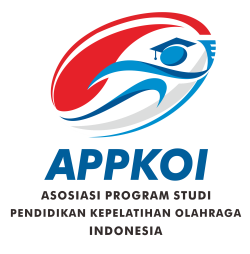At Strength and Conditioning - Exercise Science Journal (SCESJ), we are committed to maintaining the highest standards of academic integrity and quality. Our peer review process is designed to ensure that only the most rigorous, valuable, and relevant research is published. The review process helps improve the quality of the manuscripts and enhances the journal’s credibility and reputation in the scientific community.
1. Submission and Initial Screening
All manuscript submissions undergo an initial screening by the editorial team to ensure they meet the journal’s scope and formatting guidelines. Manuscripts that do not align with the journal's focus and scope or fail to meet basic submission standards may be rejected at this stage.
2. Assignment of Reviewers
Once the manuscript passes initial screening, it is assigned to at least two independent experts in the relevant field. These reviewers are selected based on their expertise, qualifications, and experience in the subject matter. The anonymity of both authors and reviewers is maintained throughout the process (double-blind review).
3. Review Process
Reviewers evaluate the manuscript based on several criteria, including but not limited to:
-
Scientific quality: The originality, significance, and rigor of the research.
-
Relevance: How well the manuscript aligns with the focus and scope of the journal.
-
Clarity and structure: The quality of writing, organization, and presentation of ideas.
-
Methodology: The appropriateness and transparency of the research methods and analysis.
-
Contribution to the field: The impact and potential implications of the research on the field of strength and conditioning, exercise science, and related areas.
Reviewers are asked to provide constructive feedback, suggest revisions, and recommend a decision (Accept, Minor Revision, Major Revision, or Reject).
4. Decision and Author Revision
Based on the reviewers’ feedback, the editorial team makes a decision:
-
Accept: The manuscript is accepted for publication with no or minimal revisions.
-
Minor Revision: The manuscript requires minor changes before it can be accepted.
-
Major Revision: The manuscript requires significant revisions. The revised manuscript is resubmitted for another round of review.
-
Reject: The manuscript is not suitable for publication in the journal.
Authors are required to submit a revision note detailing the changes made in response to reviewer comments. The revised manuscript is then reassessed by the editorial team and, if necessary, sent back to the original reviewers.
5. Final Acceptance
After the revisions are completed and the manuscript is approved by the reviewers and editorial team, the manuscript is formally accepted for publication. The corresponding author is notified, and the manuscript is prepared for publication in an upcoming issue of SCESJ.
6. Ethical Considerations
SCESJ follows ethical guidelines for publishing and peer review, including the protection of intellectual property and the prevention of conflicts of interest. All reviewers and editors are expected to disclose any conflicts of interest before reviewing or making decisions on a manuscript.
7. Transparency
The peer review process is designed to be transparent, efficient, and fair. Authors, reviewers, and the editorial board work together to ensure that high-quality research is disseminated to the scientific community.

.png)










